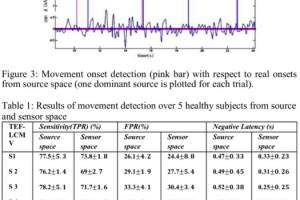How to Read A Consumer’s Subconscious Mind
A famed French mathematician and physicist of the 19th century, Henri Poincaré, was a big believer in the “creativity” of the subconscious mind. He even wrote a book about it that inspired works by Einstein and Picasso.
Legend has it, Poincaré had been relentlessly attempting to solve a complex math problem for quite some time to no avail. So, he decided to give his brain a break and disconnect from all thought of it. Weeks later he was mindlessly stepping onto a cable car when the solution appeared to him. Divine intervention? No. Subconscious intervention.
Your brain learns from every experience you’ve had and stores all that information in your episodic memory. In Poincaré’s case, the details of each math problem he’d ever solved were stored in his subconscious somewhere. While he rested, his subconscious was ruminating on all of the information it could possibly grab.
The science behind decision-making
Poincaré’s theories about the subconscious mind working while we aren’t aware of it isn’t just interesting conjecture. It turns out to be real science. For decades, neuroscientists and psychologists have been studying the brain and how it affects the way we draw conclusions. The temporal lobe of your brain controls emotional responses to situations, and neuroscientists report that when the temporal lobe is damaged, people are incapable of making decisions.
Actions versus perception
In an interview for the Harvard Business School publication, Working Knowledge, Harvard Professor, Gerald Zaltman reveals an interesting point of view on the dissonance between what a consumer wants to portray versus what their behaviors actually reveal.
When asked about his statement that “95 percent of all cognition occurs in the subconscious mind” he said, “Many consumers report handling competing brands and comparing prices at the point of purchase. However, observations of these same consumers often reveal that they don’t even look at alternatives to the chosen brand.”
Emotions drive conversions
Research shows that the emotional responses in your brain have a strong influence on crucial cognitive processes that help you make decisions. Perception, learning, memory, reasoning, problem-solving, and the most influenced of them all? Attention. That means:
You will focus more of your attention on a decision that connects with you emotionally.
Your mood also greatly impacts the way you make decisions. A Psychology and Marketing Research Professor at the University of Michigan, Norbert Schwarz, found that someone in a happy mood tends to overestimate the likelihood of a positive outcome and to underestimate the likelihood of a negative outcome. That’s why advertisers set the mood before they hit you with the sale. Ever wonder why the product doesn’t appear right away in a commercial? They need you to buy in emotionally, first. It’s also why a landing page gives you the most pertinent, emotion-driving messaging before they throw the call to action (CTA) into the mix.
Learn to reach the subconscious of consumers
While you can’t read minds, you can study behaviors. After all, our actions come straight out of our subconscious.
Harvard professor, Gerald Zaltman goes on in his interview with the Working Knowledge to say that one-on-one interviews with consumers, rather than focus groups, tend to produce more accurate results. “Many researchers tell us that one-on-one interviews are superior to focus groups,” he said. “There is now a lot of evidence that personal interviews yield deep insights that can’t be obtained from focus groups.” According to Zaltman, there are several ways to learn the truth about what’s behind a consumer’s behavior.
- 1. Compare a consumer’s stated beliefs with their actual behavior. Do they align?
- 2. Study their physiological response. Compare their unconscious physical reactions to what the consumer says when asked a question directly. They could contradict.
- Study the metaphors consumers use to express their thoughts and feelings in a one-on-one interview. There may be hidden meanings behind them.
It makes total sense. We feel far more obligated to tell the truth when we’re speaking directly to someone. In a group? Peer pressure exists, and we tend to fall in line with the opinions of others. We’re looking for acceptance and to be part of the group’s mentality. One-on-one? We have to rely on our own thoughts and instincts.
Reference





Related Posts